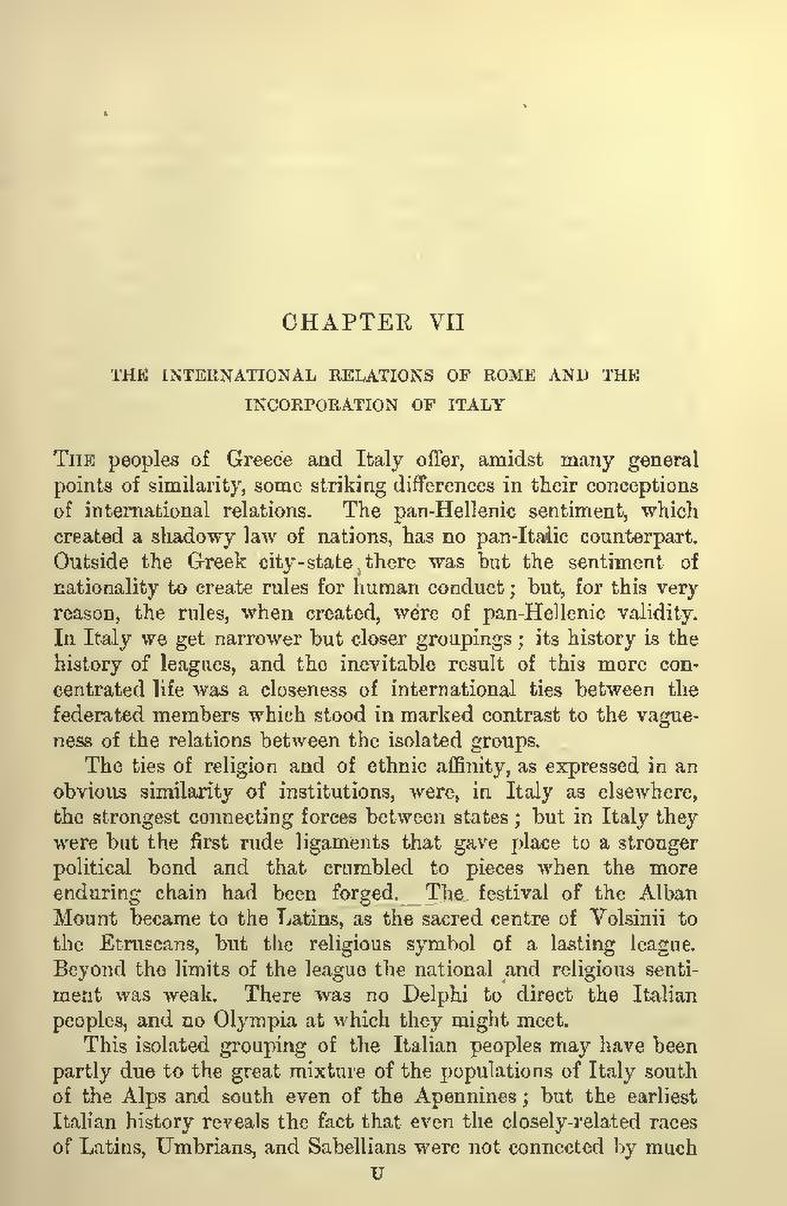CHAPTER VII
THE INTERNATIONAL RELATIONS OF ROME AND THE INCORPORATION OF ITALY
The peoples of Greece and Italy offer, amidst many general
points of similarity, some striking differences in their conceptions
of international relations. The pan-Hellenic sentiment, which
created a shadowy law of nations, has no pan-Italic counterpart.
Outside the Greek city-state there was but the sentiment of
nationality to create rules for human conduct; but, for this very
reason, the rules, when created, were of pan-Hellenic validity.
In Italy we get narrower but closer groupings; its history is the
history of leagues, and the inevitable result of this more concentrated
life was a closeness of international ties between the
federated members which stood in marked contrast to the vagueness
of the relations between the isolated groups.
The ties of religion and of ethnic affinity, as expressed in an obvious similarity of institutions, were, in Italy as elsewhere, the strongest connecting forces between states; but in Italy they were but the first rude ligaments that gave place to a stronger political bond and that crumbled to pieces when the more enduring chain had been forged. The, festival of the Alban Mount became to the Latins, as the sacred centre of Volsinii to the Etruscans, but the religious symbol of a lasting league. Beyond the limits of the league the national and religious sentiment was weak. There was no Delphi to direct the Italian peoples, and no Olympia at which they might meet.
This isolated grouping of the Italian peoples may have been partly due to the great mixture of the populations of Italy south of the Alps and south even of the Apennines; but the earliest Italian history reveals the fact that even the closely-related races of Latins, Umbrians, and Sabellians were not connected by much
